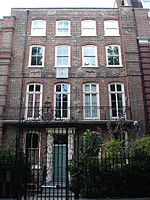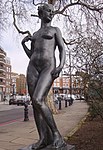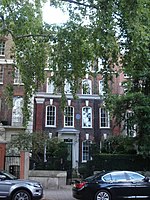Don Saltero's

Don Saltero's was a coffee house based in Chelsea, London, founded in 1695 by James Salter. Don Saltero's was distinct from other seventeenth and eighteenth century London coffee houses in that it contained many cabinets of curiosities. Don Saltero's was originally a barbers shop until Sir Hans Sloane began to donate unwanted objects from his own collections into the hands of James Salter, his former travelling servant. James Salter, or Don Saltero as he began to be known, displayed these objects in his place of business and the barbers shop evolved into Don Saltero's Coffee House and Curiosity Museum. Objects included taxidermy monsters (crocodiles, turtles, rattlesnakes), which local gentlemen including scientist Sir Isaac Newton and Sir Hans Sloane liked to discuss over coffee.Don Saltero's proprietor promoted his coffee shop as a place of marvels and wonder. An advertisement placed in Mist's Weekly Journal in 1728 ran: Monsters of all sorts here are seen, Strange things in Nature, as they grew so, Some relics of the Sheba Queen, And fragments of the famed Bob Crusoe.Knick-Knacks, too, dangle round the wall, Some in glass cases, some on the shelf, But what's the rarest sight of all? YOUR HUMBLE SERVANT SHOWS HIMSELF. Richard Steele recorded a chance visit to Don Saltero's in The Tatler. Benjamin Franklin, also noted visiting "Don Saltero's curiosities" when in London.
Excerpt from the Wikipedia article Don Saltero's (License: CC BY-SA 3.0, Authors, Images).Don Saltero's
Cheyne Walk, London Chelsea (Royal Borough of Kensington and Chelsea)
Geographical coordinates (GPS) Address Nearby Places Show on map
Geographical coordinates (GPS)
| Latitude | Longitude |
|---|---|
| N 51.4839 ° | E -0.1661 ° |
Address
Cheyne Walk 18
SW3 5RD London, Chelsea (Royal Borough of Kensington and Chelsea)
England, United Kingdom
Open on Google Maps











